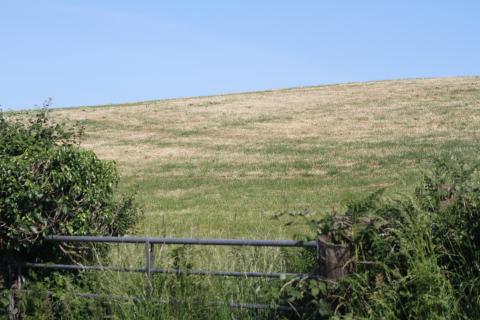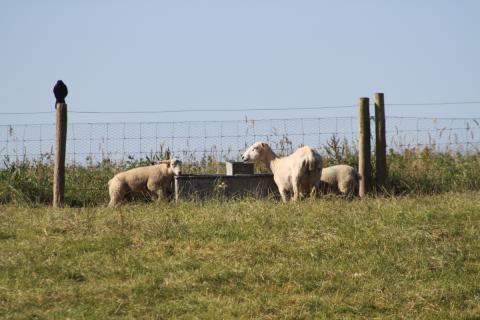27 June 2018
Farmers across Wales suffering from the impact of the dry weather are being urged to plan ahead to reduce further impact on feed supply and livestock.
Challenging weather conditions since last autumn mean that forage shortages going into summer are not uncommon and, with very little rainfall in recent weeks, these farms are now feeding winter silage stocks or buying in forage.
Abigail James, Technical Officer at Farming Connect, says early decisions are key to maintaining feed supplies and the welfare of stock.
“It’s not easy to predict when it will rain, but many need to start putting a plan in place as little rain is in the forecast,’’ she warns.
As a starting point, she advises assessing current feed supplies. “How much of your winter supplies can you afford to feed now and for how long? How much and what can you buy in to buffer current feed supplies?’’
One option, says Abigail, is to either feed higher concentrate levels or silage.
Stock will still need between 10 and 14 days’ worth of supplementary feed once it has rained as grass growth will need time to catch up.
If buying forage, consider dry matter value - a low dry matter means stock will need to eat more, says Abigail.
“If feeding winter stocks, count the bales or measure clamps regularly to monitor usage,’’ she recommends.
Topping fields is not advisable - the covers might look unsightly but they have a feed value and help to reduce moisture loss from the ground.
For farms operating a rotational grazing system, don’t over-graze as this will increase moisture loss from the soil.
There are also measures farmers can take with livestock numbers to ease the pressure on feed supply, including selling surplus stock and culling ewes marked during lambing once lambs are older than eight weeks.
“If possible, lower your stocking rate – don’t carry cull dairy or suckler cows or heifers for the sake of it,’’ says Abi.
Lambs should be weighed regularly and consideration given to weaning after they are twelve weeks old to reduce demand on the ewe and to ensure lambs have the pickings of any available grass.
“Introduce creep feed to lambs if pasture supply is inadequate – young lambs before weaning have a feed conversion efficiency of 4kg of creep to 1kg lwg, reducing to 12:1 as the lambs get older,’’ says Abi.
Use silage trailers or similar to provide shade for lame or young animals that are unable to get out of the sun.
In dairy herds, drying off low yielding cows early will lower their energy needs.
If cows are housed for half the day in well ventilated sheds, consider grazing at night to reduce heat stress.
It is important to check water pressures during the day to ensure demand across the whole farm is being met.
“Consider placing more troughs where demand is not being met,’’ says Abigail. “Look out for grass patches continuing to grow well as this could indicate a possible water leak.’’


